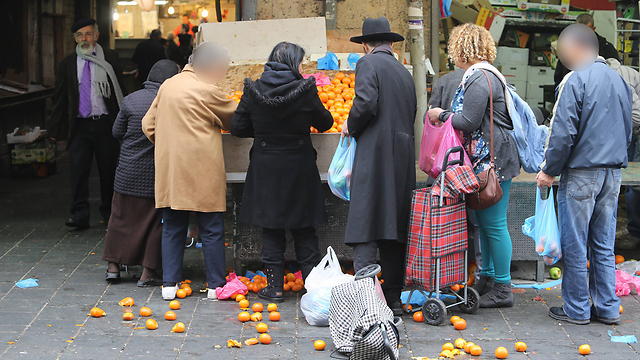An OECD report has brought to light that Israel pays fourth lowest amount in pensions, only paying more than Chile, Mexico, S. Korea; children are the poorest sector in Israeli society, while millennials are typically poorest in other OECD countries.
The annual welfare report released Monday by the Insurance Institute of Israel (NII) found that Israel is ranked among the lowest countries of the OECD, only above Chile, Mexico and South Korea, in terms of the welfare support it offers its citizens.
The report also found that children’s and senior citizens’ welfare, in addition to unemployment, are among the lowest in the Western world.
The director general of the National Insurance Institute of Israel (NII), Prof. Shlomo Mor-Yosef, called on the government to increase the welfare budget. He wrote in the report’s foreword, “The National Insurance Institute supports increasing public expenditure gradually by about 5 percentage points so that it reaches the average rate of OECD countries.” This recommendation has been repeated time and time again over the past decade to no avail.
According to the report, in 2015, the social security system was mildly strengthened: The 2013 cuts to child benefits were cancelled and the money lost from May 2015 until present day was given back retroactively. This was done both by increasing child benefits and by starting a NIS 50 a month savings plan for each child. However, Israel still ranks exceedingly poorly on the hierarchy of welfare expenditure.

The yearly report also showed that while children are the poorest sector of Israeli society, millennials – those between the ages of 18-25 – were the poorest sector of the majority of developed countries.
The NII meanwhile paid out approximately NIS 74.2 billion in 2015, compared to NIS 71.6 billion in 2014. This figure includes NIS 1.5 billion to various government agencies for different community development projects, along with the operating expenses for the Social Security System.
Israel invested 16.1 percent of its GDP in health and welfare services. More than half of the expenditures were towards pension payments (equaling approximately 8.7 percent of the GDP), while the rest (7.2 percent of the GDP) went to went to public services, primarily public health services.
The report shows that a child in Israel has a one in four chance of being poor, which is the highest probability compared to other age groups. The report also showed that the amount of people living in poverty in Israel is 74 percent above the OECD average.
“This poverty primarily affects children and the elderly,” the document said.
Additionally, the document showed that Israel’s poverty rate in all age groups is higher than the poverty rate of most of the other countries. The only exception was amongst those in the 51-65 year old age group, where the rate is similar to that in other countries.
The document said “this fact illustrates the great diversity in poverty rates in Israel by age group, and on the high amount of income inequality in this aspect compared to the average in other developed countries.”
As reported by Ynetnews
